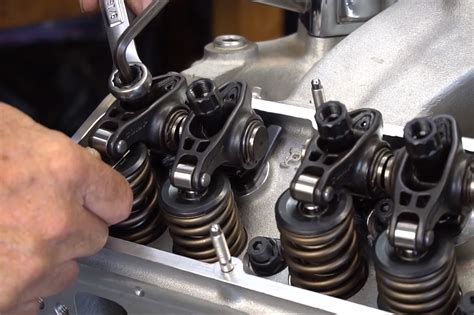Avoid Common 350 Chevy Valve Adjustment Mistakes: A Practical Guide
The small-block Chevy 350, a legendary engine known for its power and reliability, requires regular maintenance. Valve adjustments are crucial for maintaining peak performance and preventing damage. However, even experienced mechanics can fall prey to common mistakes. This guide will help you avoid these pitfalls and ensure your 350 runs smoothly for years to come.
Why are Valve Adjustments Important?
Before diving into the mistakes, let's understand why valve adjustments are necessary. Over time, valve train components wear, causing valve clearances (lash) to change. Incorrect clearances lead to several issues:
- Poor engine performance: Insufficient clearance can lead to burned valves, while excessive clearance results in noisy operation and reduced power.
- Damaged components: Incorrect valve lash can damage cam lobes, rocker arms, and even the valves themselves.
- Reduced fuel efficiency: Inefficient combustion due to improper valve timing directly impacts fuel economy.
Common 350 Chevy Valve Adjustment Mistakes
Now let's address the most frequent errors made during 350 Chevy valve adjustments:
1. Incorrect Tools and Gauges
Mistake: Using worn or inaccurate feeler gauges, or improvising with incorrect tools.
Why it's a problem: Feeler gauges are precision instruments. Worn gauges will give inaccurate readings, leading to incorrect valve clearances. Using the wrong tools can damage engine components.
Solution: Invest in a good quality set of feeler gauges and ensure they are in good condition. Always double-check your measurements.
2. Ignoring Engine Temperature
Mistake: Adjusting valves on a cold engine.
Why it's a problem: Engine components expand as they heat up. Adjusting valves on a cold engine will result in incorrect clearances once the engine reaches operating temperature.
Solution: Always warm the engine to its normal operating temperature before beginning the adjustment process. Consult your vehicle's manual for the ideal temperature.
3. Incorrect Adjustment Procedure
Mistake: Failing to follow the proper sequence for adjusting valves (e.g., cylinder order, intake/exhaust).
Why it's a problem: Each cylinder has a specific firing order, and valves need to be adjusted in the correct sequence. Skipping steps or not following the proper order can lead to timing issues and engine damage.
Solution: Consult a reputable repair manual specific to your 350 Chevy engine for the correct procedure and firing order. Take your time and meticulously follow each step.
4. Over-Tightening Adjusting Nuts
Mistake: Over-tightening the rocker arm adjusting nuts.
Why it's a problem: Over-tightening can strip the threads, damage the rocker arm, or even bend the pushrods.
Solution: Use a torque wrench to tighten the nuts to the manufacturer's specified torque. Don't rely on "feel."
5. Not Rechecking Adjustments
Mistake: Not rechecking valve clearances after running the engine for a short period.
Why it's a problem: Even with careful adjustments, clearances can slightly change after the engine warms up and runs.
Solution: After the initial adjustment, run the engine for a short period (15-20 minutes) and then recheck the clearances.
6. Using Incorrect Valve Lash Specifications
Mistake: Using incorrect valve lash specifications for your specific camshaft and engine setup.
Why it's a problem: Different camshafts have different valve lash requirements. Using the wrong specifications can result in severe engine damage.
Solution: Always consult your engine's repair manual or the camshaft manufacturer's specifications for the correct valve lash settings.
Maintaining Your 350 Chevy: Beyond Valve Adjustments
Regular maintenance, including oil changes, air filter replacements, and spark plug checks, are essential for prolonging your 350 Chevy's lifespan. While valve adjustments are important, they're only one part of a comprehensive maintenance plan.
This guide aims to equip you with the knowledge to successfully adjust your 350 Chevy's valves and avoid common pitfalls. Remember, meticulous attention to detail and using the correct tools and procedures are crucial for a successful outcome. If you're uncomfortable performing this task yourself, seeking the help of a qualified mechanic is always recommended.

